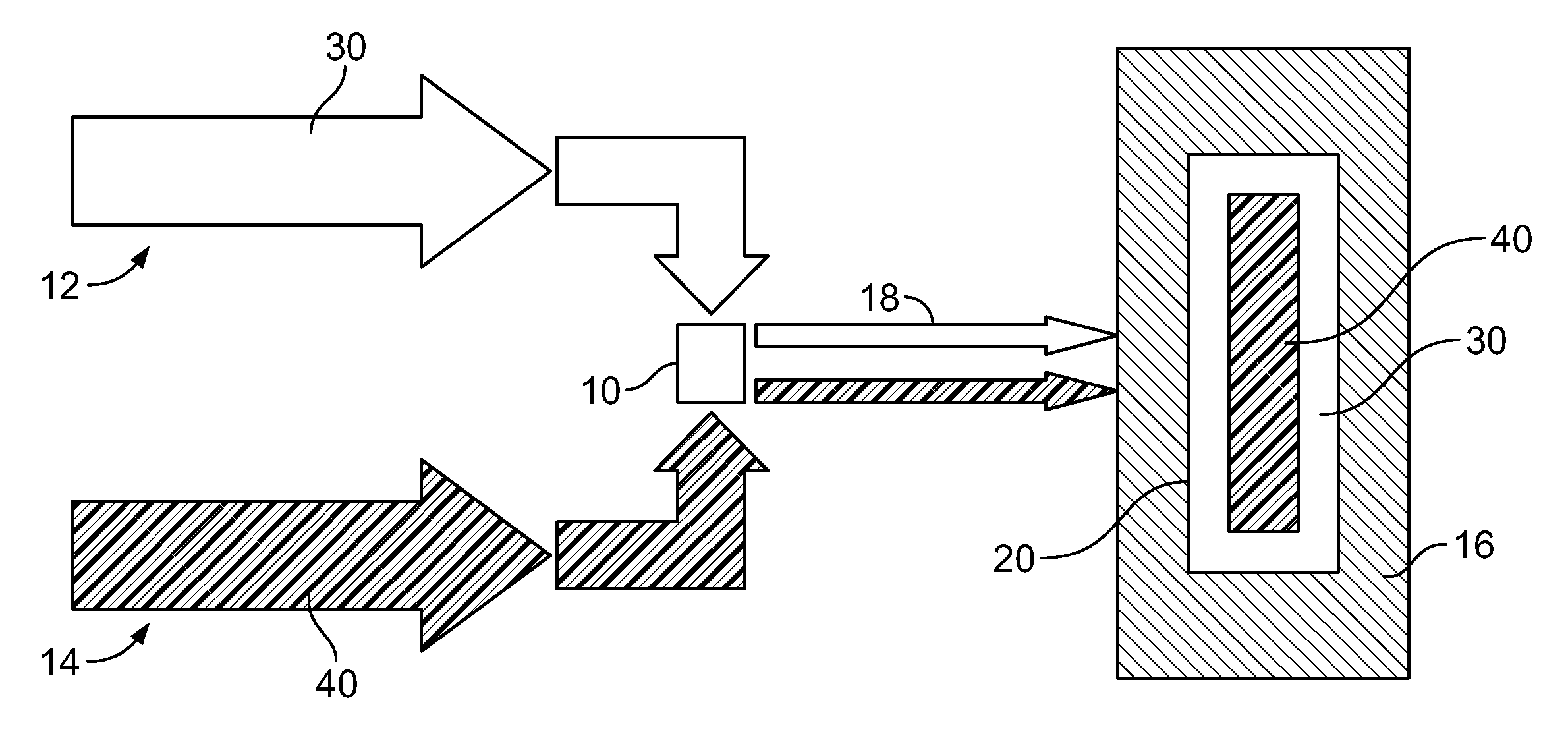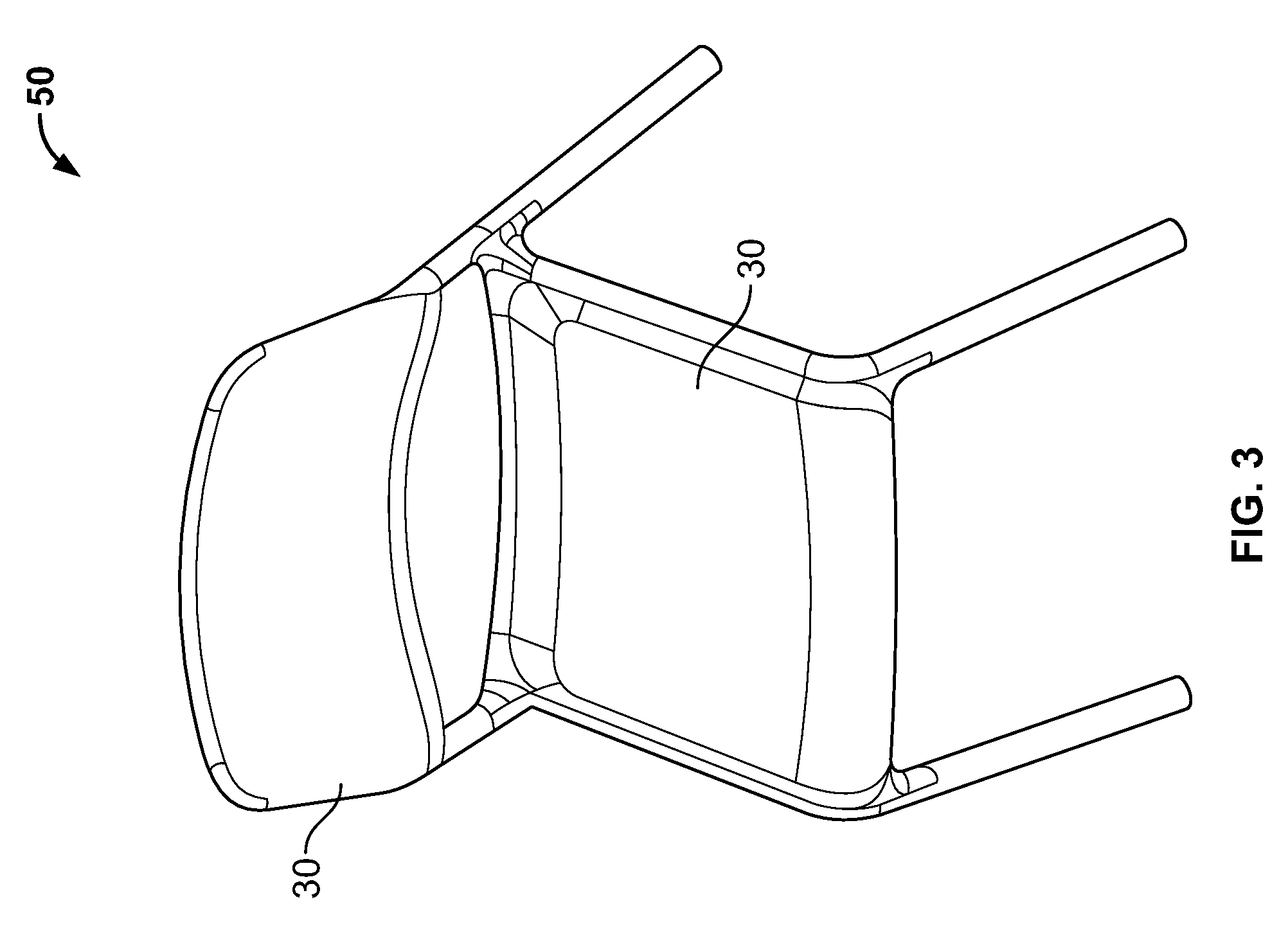Gas-assisted co-injection molded chair
a co-injection molding and chair technology, applied in the field of chairs, can solve problems such as prone to material failure, and achieve the effects of minimizing the swelling of the chair, and minimizing the post blow in the inner material
- Summary
- Abstract
- Description
- Claims
- Application Information
AI Technical Summary
Benefits of technology
Problems solved by technology
Method used
Image
Examples
Embodiment Construction
[0020]Chairs 50 made by the co-injection molding process herein described are shown in FIGS. 1 through 4. As used herein, the term co-injection molding is meant to refer to a process by which two like or dissimilar plastics (e.g., a skin or outer material 30 and a core or inner material 40) originating from different sources (e.g., injection units 12, 14) are injected into a single mold 16 during a single cycle. The co-injection of the plastics may be sequential or simultaneous, as further described below. Co-injection molding is different from insert molding or overmolding.
[0021]Co-injecting the plastics may be done using a substantially sequential process. Typically, plastics are injected through a co-injection manifold and into the mold at temperatures around 300-600 degrees Fahrenheit. A co-injection manifold 10 (FIGS. 5 and 6) is typically located between injection units or barrels 12, 14 and a mold 16. A typical co-injection manifold 10 is fixed to the injection units 12, 14. ...
PUM
| Property | Measurement | Unit |
|---|---|---|
| volume percent | aaaaa | aaaaa |
| temperatures | aaaaa | aaaaa |
| temperature | aaaaa | aaaaa |
Abstract
Description
Claims
Application Information
 Login to View More
Login to View More - R&D
- Intellectual Property
- Life Sciences
- Materials
- Tech Scout
- Unparalleled Data Quality
- Higher Quality Content
- 60% Fewer Hallucinations
Browse by: Latest US Patents, China's latest patents, Technical Efficacy Thesaurus, Application Domain, Technology Topic, Popular Technical Reports.
© 2025 PatSnap. All rights reserved.Legal|Privacy policy|Modern Slavery Act Transparency Statement|Sitemap|About US| Contact US: help@patsnap.com



